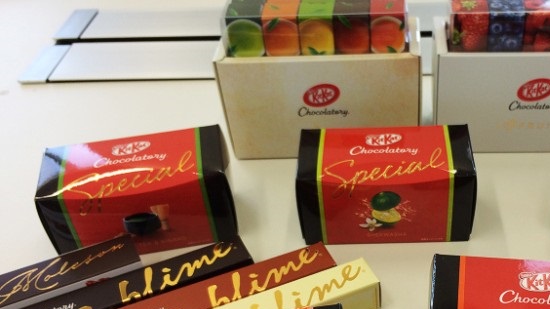A freshly made white chocolate and raspberry mix is carefully poured into a piping bag by chef Yasumasa Takagi, one of Japan's foremost patissiers.
After snipping the end of the bag, he squeezes the delicious pink paste into a tray of oblong, white plastic molds.
Surprisingly, Takagi isn't creating an elaborate confection for customers to his fashionable Tokyo cafe; this is something far more modest.
It's a KitKat.
Most of the world knows the KitKat as an ordinary coffee break snack made from wafers and milk chocolate.
In Japan, it's in a completely different league.
Here, gourmet versions, pioneered by Takagi, compete with a mind-boggling array of mass-produced flavors that to some palates might border on the bizarre.
Wasabi KitKat anyone?
How about lemon vinegar?
Or pumpkin pudding, green tea, Shinshu apple or adzuki bean sandwich?
It's a long way from the KitKat's humble origins in 1930s England.
Born in the northern city of York, the chocolate treat was relatively unknown globally until local manufacturer Rowntree was bought by Swiss food giant Nestle in the 1980s.
Winning formula
Even as it spread across the planet, success was never guaranteed in Japan -- a market notoriously difficult to break into for non-domestic brands.
So how has it become such a phenomenon?
That's down to some hard work and smart ideas from KitKat's Japanese marketing gurus in the western city of Kobe.
And also a lucky quirk of language.
KitKat sounds very similar to "kito kato," which in Japanese means "to surely win."




